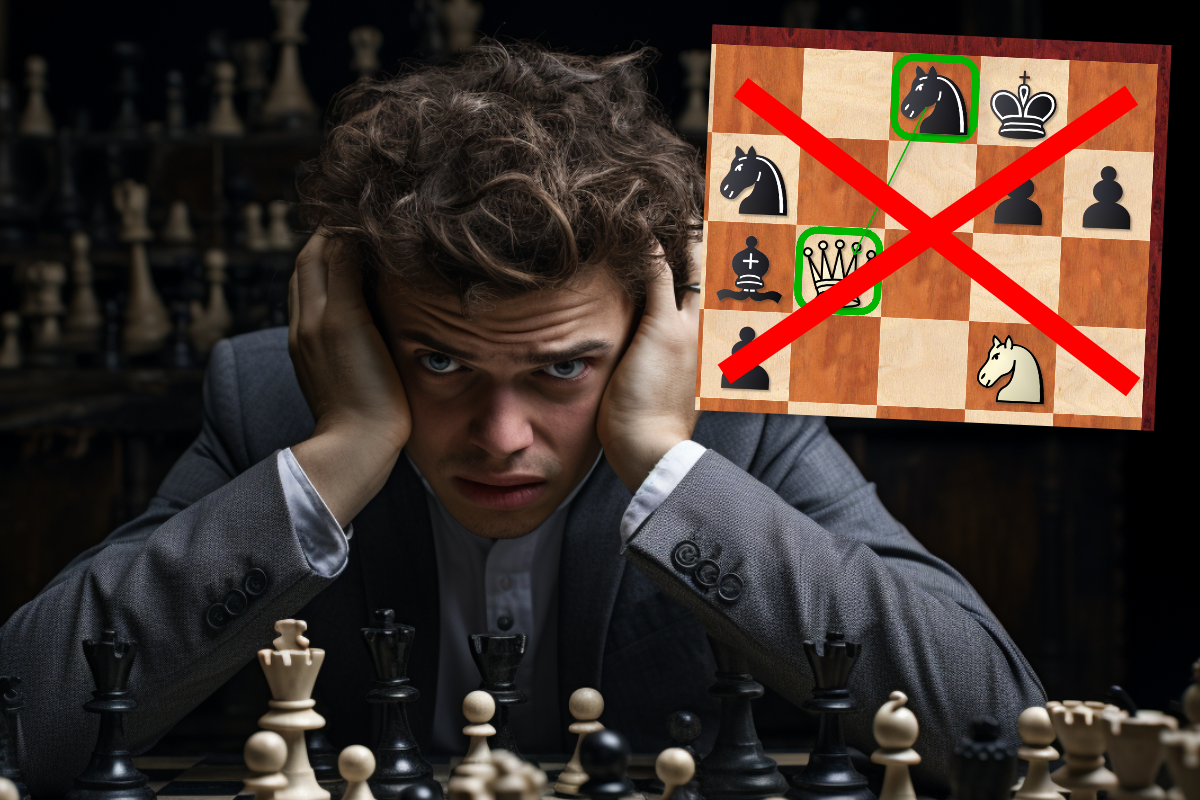


The key point to realize is that there is no magic bullet to solve this, and if your miss was due to an outside distraction such as a dog was barking (solution: earplugs), this article won't help you one bit. Still, let's assume none of those things, and that the shot you missed was absolutely within your ability to see, find and play.
In tactics there are usually three kinds of misses:
All three of these can and will happen to even the best players in the world, but the third is the one that can leave the most bitter taste in one's mouth. If you simply failed to even guess there was a shot to be had, you will shake your head, mumble and grumble a bit, and shrug it off. 40 years ago it might have felt rarer, but with today's super engines, we know it is a regular occurrence especially in complex positions.
The second is a bit more frustrating as you felt you had it, but somehow some aspect of it eluded your ability to solve it to the end. Some baffling key move, or an unusually complicated continuation. Again, engines are merciless in revealing these to us, but they also enrich our play and imagination with these fascinating sequences. I have heard the words "I saw it, but couldn't make it work" from the elite more than once.
The third is a bit more complicated because it is a bit of a mix of 1) and 2). We are all victim to them, but here is a position in which it almost happened, except a key question saved the day. That key question might save yours too.
As soon as my opponent played this knight move, the intention was clear: force my knight of e5 and prevent further use of that square. However, an equally obvious question reveals itself now: what about 13. Nxf7?
At first view, it seems pretty pointless: sure if 13. Nxf7 Kxf7?? 14. Ng5+ will win the rook, but if Black refuses to be so cooperative and instead plays 13... Rxe1+ 14. Qxe1 Kxf7, what then?
Sure, we have a check with 15. Ng5+ Kg8, but there endeth the party. 16. Qe6+ is prevented by the knight on f8, and 16. Qe8 accomplishes nothing after 16... Nf6 attacking the queen and protecting f7.
This sort of situation is something we all face, and quite a lot: a glance at the many ideas, some running into a brick wall and we are forced to drop them and move on. Except.... this is not one of them.
The key is in that mental note, "16. Qe6+ is prevented by the knight on f8". There is a knight protecting the square, sure, but without it the note would be "Qe6 wins with mate". In tactics, one of the classic motifs is the diversion or decoy in which a piece prevents our winning blow. To that end, and we train ourselves to ask the question "how can I remove the piece or move that is preventing my win?"
This is easy enough when faced with puzzles we know have a winning solution, but it is easy to forget this sort of question in the throes of an actual game. However, if we ask this question here, suddenly new possibilities beg to be looked at.
There is no way to attack the knight on f8, so that leaves only one possible move: 16. Bxh7+?! No, no exclamation points until we know if it is any good. It might just lose another piece for no good reason after all, so for now we are just looking. Hmmm.... Ok, so on the plus side, if 16. Bxh7+ Nxh7 then 17. Qe6+ is not only possible, it mates!
So that is one promising revelation, but what about 16. Bxh7+ Kh8? Will this refute it all and leave us shaking our heads in disappointment? These things happen all the time, and when they do, be ready to move on. But not this time! Our queen on e1 (this is still all in our mind's eye) now has the new possibility of 17. Qh4! And yes, this is really looking strong.
In reality, I was in an online blitz game and stopped my calculations here, happy with the position and after seeing Qh4 and the powerful discovered checks it promised, I made a snap decision to play it as a result. If all went bad, I would most likely still have a repetition in there.
Were this a slower game I would have spent time working out the full line before suffering a chess form of buyer's remorse ("Why didn't I spend a bit more time calculating it properly?").
Truthfully, I almost gave up on the line after 13. Ng5+ as above, but the position nagged at me, and it was when I asked myself the question "is there any way to deal with that Nf8?" that everything clicked into place. Hopefully, you too will find yourself able to ask that question and reach a solution that had seemed to be absent at first.